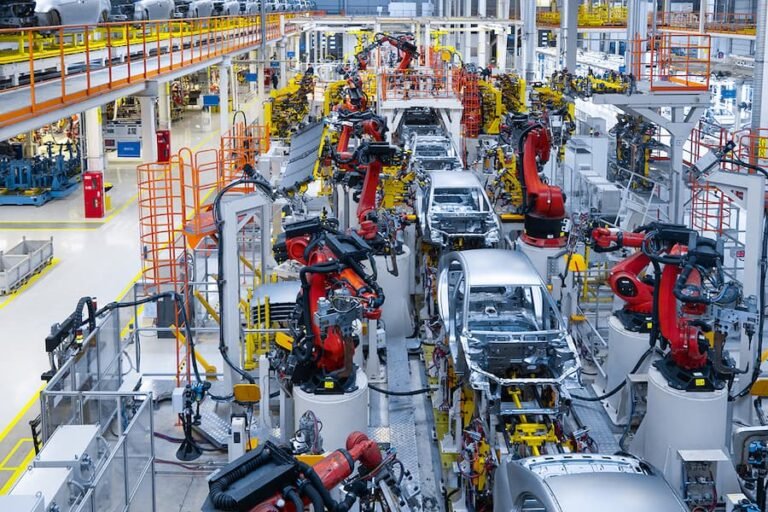From further development of EVs to continuous improvement in battery technology, from developing autonomous driving systems to vehicle-to-vehicle/infrastructure is a huge area of change. Such a development involves using reconditioned fuel injectors, which can help prove how technology can help evolve vehicle performance and environmental impact. These re- and remanufactured parts become economically viable alternatives to new ones, while at the same time contributing to the reduction of waste and development of the circular economy. As industries continue to open their doors for innovative solutions, this kind of technology truly opens the door to a more circular, efficient, and technologically advanced transportation future.
Electrification and Battery Technology:
The electrical vehicles represent a step forward, being rooted in the use of electricity and more importantly batteries. Recent developments in battery technology have finally started to make electric cars a more practical and increasingly appealing option for potential buyers. Key areas of improvement that include increasing energy density, and the ability to charge quicker, make all attributes of EV performance and convenience better. Major investments in research and development continue with the improvements in battery technologies, not least the pursuit of solid-state batteries. Such inventions are going to further extend driving range and reduce charging durations, thus making electric vehicles much more viable and appealing to customers.
Autonomous Driving:
Self-driving technology is fast reordering our approach to the notion of transportation. Through various advances in the development of artificial intelligence, machine learning, and sensor technologies, vehicles increasingly operate independently of human operators. All this progress is further pushing the boundaries toward fully autonomous vehicles that can safely and efficiently navigate even the most complex driving conditions. The companies are deeply interest in the perfection of these technologies with a view that autonomous cars would be able to handle diverse and complex environments with great reliability. The deeper innovations go and develop, the greater the chances that these will fundamentally change how we relate to and use transportation.
Connected Vehicles:
The uprising of the Internet, connectivity, and communication technologies are driving the development of connected vehicles. These will be able to communicate with each other and with the roadside environment to enhance safety-like collision avoidance systems but also to enable real-time data exchange that improves navigation and traffic management. Indeed, the potential of connected vehicles is enormous, as they allow seamless communication between the vehicle and the environment, hence offering safer, smarter, more efficient transportation systems. These technologies being integrated into transport are changing the way we navigate and interact with the road network.
Advanced Driver-Assistance Systems:
It includes adaptive cruise control, lane-keeping assistance, and automatic emergency braking, all those safety and convenience in-car levels on the road. These systems will take advantage of a combination of sensors, cameras, and complex software algorithms that help drivers and minimise accident risks. In such a way, ADAS is progressively taking us to experience more autonomy when driving. Not only does it prevent collisions, but it also contributes to smooth and controlled driving marks of considerable progress en route to fully autonomous vehicles.
Sustainable Materials and Manufacturing:
Because of the advances in material sciences, lighter and more good components are being developed. This contributes to weight reduction in vehicles, hence improving fuel efficiency. This is forcing manufacturers to seek ways through which they can cut carbon footprint throughout the entire value chain of production. These are in tandem with the greater commitment to environmental protection and the strides in the improvement of vehicle performance and sustainability. The outcome of intense research into both new materials and greener production techniques, this industry is taking a giant leap toward an ecologically aware future.
Advanced Driver-Assistance Systems:
The different ADAS technologies deployed for the betterment of in-car convenience and safety levels on the roads include adaptive cruise control, lane-keeping assistance, and automatic emergency braking. All these systems will take advantage of a combination of sensors, cameras, and complex software algorithms which will help drivers and minimise accident risks. In such a way, ADAS is progressively taking us ahead to experience more and more autonomy while driving. It helps to avoid collisions and at the same time aids smooth controlled driving, which again marks very substantial progress toward the fully autonomous vehicle.
Conclusion:
The automotive sector is being continuously disrupted by transformational technologies that keep redefining the face of motoring. In this regard, with the proliferation of electric vehicles and relentless developments in the field of batteries, sustainable driving is practically quite viable and decently attractive. Driverless technologies and connected vehicles will rethink safety and efficiency, while ADAS aims at increasingly sophisticated driver assistance and accident avoidance. Besides, the emphasis on sustainable materials and production techniques underlines the commitment to minimising environmental impact, further encouraging eco-friendly innovation. These developments put together are hence improving not only the driving experience but also the path toward a more sustainable, safer, and technologically advanced automotive future.
Visit Theessport for more interesting blogs.

